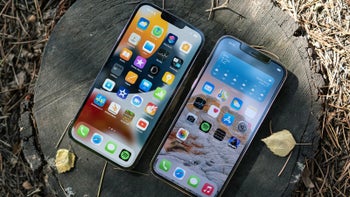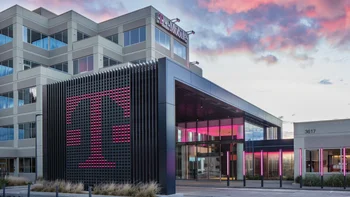The iPhone 14 Max may have a 120Hz display, after all

According to Korean supply chain sources speaking for The Elec, LG has finally mastered the frugal LTPO panel production yield enough to warrant Apple's iPhone 14 series display contracts.
Previously, Apple was on the fence if it will release the iPhone 14 Max with a standard 60Hz LTPS, or a more contemporary 120Hz LTPO panel, but now LG has seemingly been able to pull off enough successful trial runs to warrant a place in the pantheon of iPhone 14 series LTPO screen suppliers.
It's not just reportedly going to supply LTPO panels for the iPhone 14 Max, though, but actually be in the mix for the iPhone 14 Pro Max display, too. Together with the iPhone 14 Pro, that's the one that will have a punch-hole screen instead of a notch for the selfie camera, and house the rest of the Face ID components beneath the display panel. The smaller, 6.06" 120Hz iPhone 14 Pro screen, however, will allegedly be supplied only by Samsung.
Since LG has retooled for LTPO production the same lines it uses for supplying 60Hz LTPS displays to Apple, it won't be able to provide it as much of them as it did for the iPhone 13 series. The slack will eventually be picked by Apple's third display supplier, the Chinese from BOE, and the LG LTPO game may have been exactly that - to leave the simpler, lower margin panels for BOE, while it moves higher in the Apple display supply chain with the more complex LTPO technology.
LG's LTPO production success story is also a win for Apple, as it will be able to diversify its most important iPhone component production away from Samsung's monopoly. Granted, according to The Elec's sources Samsung will still be making the lion's share of iPhone 14 Pro Max 120Hz punch-hole panels, but the sheer fact that LG may have wiggled its way into the mix is a win-win situation for Apple and Korea's second-largest OLED screen maker.
Apple has been wanting to escape Samsung's monopoly on its iPhone OLED display supplies for a good while now. Samsung charges pretty penny for its high-tech panels, and Apple hopes that it can inject more of LG and BOE as suppliers into the mix in order to drive its iPhone screen costs down. This is why it wants to go with LG and BOE for its base iPhone 14 models next year, like it went with them for the iPhone 13 mini and iPhone 13 models this year.
Next year, BOE is expected to increase its iPhone display production market share to 20% of the 200 million or so total units Apple will need. This year, it is expected to supply about 15 million panels to Apple, while in 2022 its deliveries may increase to 45 million. The other Samsung market share usurper, LG, is also expected to increase its display shipments to Apple from 50 million to 60 million, leaving Samsung with "just" 130 million units.
While this is about the same number of OLED displays that Samsung will ship to Apple this year, the total number of iPhones that are forecast to ship in 2022 will increase, so BOE and LG are basically diluting Samsung's market share in the iPhone screens supply chain. That market share may ultimately fall to 50% next year for the first time in the iPhone's OLED panel history, marking a watershed moment for Apple which has had to depend on its frenemy since the iPhone X notch screamed loud and proud back in 2017.
With this latest leak about the potential iPhone 14 series screen panel suppliers and their technologies, we can predict the following four iPhone 14 models that Apple may release in 2022:
- 6.1" iPhone 14 with 60Hz notch display by LG and BOE
- 6.7" iPhone 14 Max with 120HZ notch display by LG
- 6.1" iPhone 14 Pro with 120Hz punch-hole display by Samsung
- 6.7" iPhone 14 Pro Max with 120Hz punch-hole display by Samsung and LG













Things that are NOT allowed: